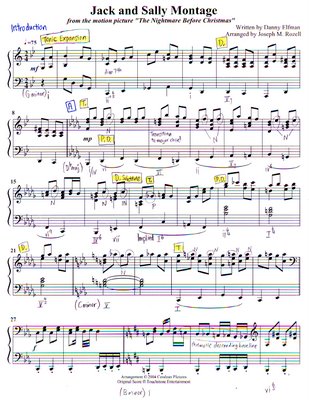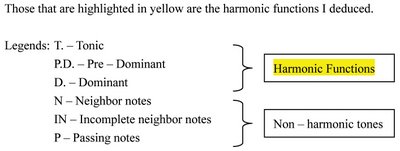


I found that a very prominent feature in one of its motivic idea is this semitonal movement (e.g. bar 9). This upper chromatic note may sometimes be treated as a neighbour note or part of the chord progression.
I felt that this piece of music can be largely classified as strophic form, but for easy reference I have labeled it according to the change in melodic / harmonic pattern and feel of music.
The outline of tonality is as follows:
Introduction: G minor
Section A: Db major → C minor → B minor (I just realized that these keys modulate in a chromatically descending manner!)
Transitory passage: seems to be in C major with lots of chromatically altered chords (although I can't quite notate it)
Section B: Bb major → G minor →Bb major
Transitory passage: C major (again with many chromatic embellishments)
Section C: E major (chord progression brought about by ascending whole tones, F #, G#, A#) → Bb major
Section B’: Bb major → G minor →Bb major
Transitory passage: C major
Section C’: G minor
Section D: A major → C major
Transitory passage: C major → Bb major
Section A’: G minor
1 comment:
Hi JR,
Very brave of you to tackle the harmonic language here. Perhaps not surprising why nobody responded, or perhaps they had difficulty reading your score. Somehow, I can only click to enlarge your first page, so I'll only comment on that (my ageing eyesight have difficulty with your unenlarged second page)
Not everything is functional. Traditional functional analysis applies only to the opening 8 bars. The first 4 bars is a kind of plagal tonic expansion with the unusual elaboration of iio6/5 as a IV substitute, not the mention the unusual dim 7th arpeggic bass movement in bs. 2-3!
Your section A starts more in Bb min before moving into Db:
Bb min: i V6/iv iv
Db ii V7 viio7/vi vi
[In case the alignment is out in the posting: iv/Bb = ii/Db as pivot]
Thereafter, the harmonies are loosely functional, moving through a tonicization of F (V of Bb min) before reaching V of C min.
Note that the Gb in b. 17 is more a neighbour to F than passing to A.
Post a Comment